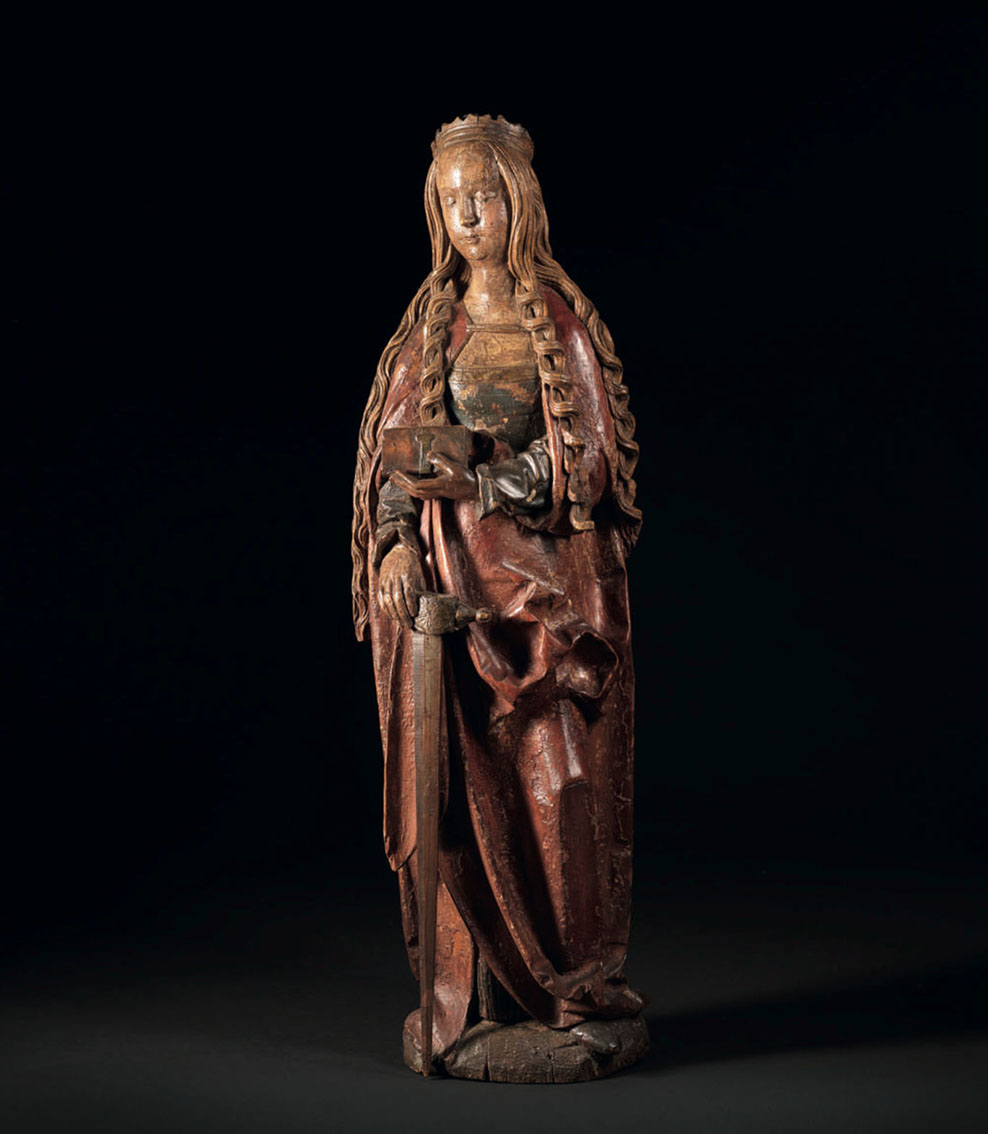Description
Important wood figure hollowed out in the back with a gouge. Original polychromy well preserved. Lack the top of the crown. The sword’s blade and the left hand are later restorations.
The Golden Legend written by Jacobus de Voragine during the 13th century tells us Saint Catherine, daughter of king, was an expert in mastering liberal arts when she was only eighteen. When Emperor Maxence decided to organize an extraodrinary sacrifices ceremony dedicated to the pagan gods the young woman did not hesitate to confront him. Indeed the young princess, seeing that out of fear even christians were making offerings, tried to convince the emperor his cult was not the right one. Immediatly he gathered fifty of the best scholars in the country, masters in every sciences, in order to bring back Catherine to the faith in the gods. Underestimating the princess the fifty men found themselves beatten and convinced to join the christian faith. Emperor Maxence understanding she will not change her mind condamned her to die grinded by a breaking wheel. With the intervention of an angel the wheel broke and Catherine beheaded eventually met death.
The ellongated sculpture is carved from a limewood log hollowed out in the back to prevent the apparition of cracks. This wood was especially favored by Swabian workshops because of its homogeneous appearance and of its tender and light nature allowing a very delicate carving with a nice polishing. Here it presents a particularly elegant work with the depiction of the hair worn loose, expression of her virginal youth. The braids are carved in an extraordinary double-spiral shape reminding us the refinements of her rank. Another detail appears to be revelling of the artisan’s abilities ; the way the cloak creases and shows strong folds on the right thigh without any reason. Catherine’s blue dress and red cloak highlight with their rich colours the regal rank the crown explicitely states. The book she has in her left hand, accompanying the saint in every depictions, embodies her abilities regarding dialectic, rethoric and sophism. In the other hand she holds the sword of her martyr.
The face of Saint Catherine slightly giving a bow shows a large forehead, full cheeks, straight nose and small mouth with full lips, characteristics of Ulm region and particularly of Niclaus Weckmann circles. Another point comfort this hypothesis. The pair of cuts we can see marked below the base of the statue indicates a bench with a forked vice was used during the making. This tool was not unknown from the other workshops but still is a strong characteristic of weckmannian circles (Sophie Guillot de Suduinart).
Made to be presented against a wall, an altar-piece’s door or a column, the posture of this Saint Catherine –legs, arms, head, hairs- nevertheless invite the collector’s gaze to turn around her. Christ’s mystical bride granted of a strong intercession power, Saint Catherine was during the end of the Middle-Ages a much revered saint and the charm with which the artisan worked tells us of this affectionnate bond.

